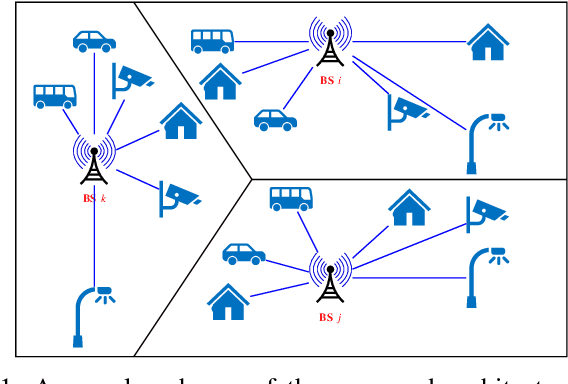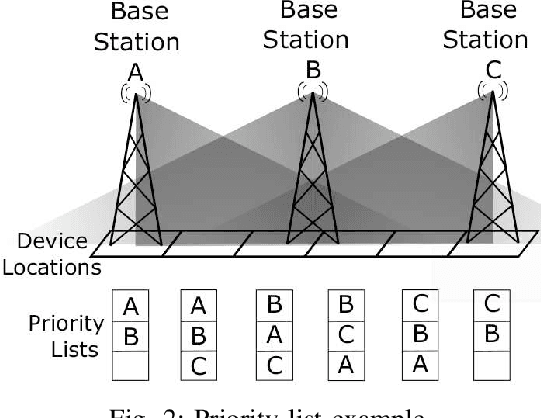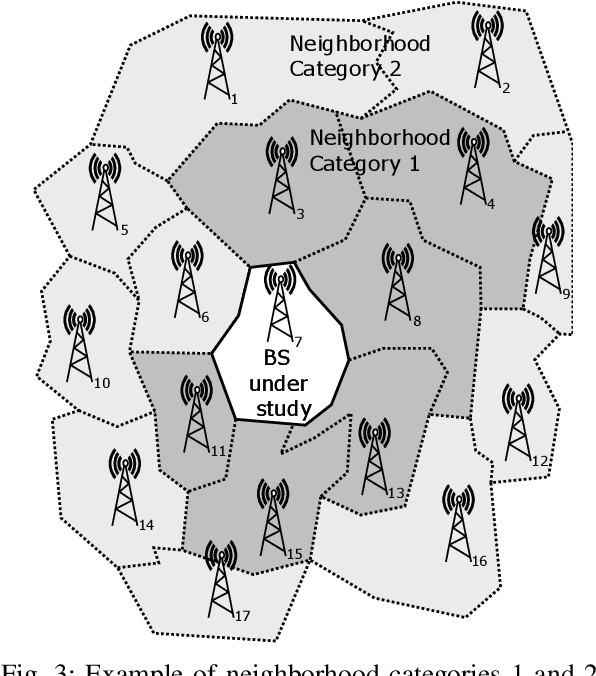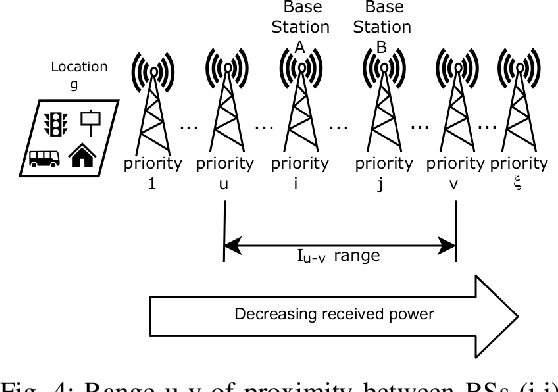A Machine Learning framework for Sleeping Cell Detection in a Smart-city IoT Telecommunications Infrastructure
Paper and Code
Oct 02, 2019



The smooth operation of largely deployed Internet of Things {IoT} applications will depend, among other things, on effective infrastructure failure detection. Access failures in wireless networks Base Stations (BSs) produce a phenomenon called "Sleeping Cells", which can render a cell catatonic without triggering any alarms or provoking immediate effects on the cell's performance, making it difficult to discover. To detect this kind of failures, we propose a Machine Learning framework, based on the use of Key Performance Indicator (KPI) statistics from the BS under study, as well as those of the neighboring BS with propensity to have their performance affected by the failure. A simple way to classify neighbors is to use Voronoi diagrams. In this paper we propose a much more realistic approach based on the nature of the radio-propagation and the way the devices choose the BS to which they send access requests. We gather data from large-scale simulators that use real location data for BSs and IoT devices, and pose the detection problem as a supervised binary classification problem. We measure the effects caused on the detection performance, by the size of time aggregations of the data, the level of traffic and the parameters of the neighborhood definition. Extra Trees and Naive Bayes classifiers achieved Receiver Operating Characteristic (ROC) area under the curve scores of 0.996 and 0.993 respectively with False Positive Rates (FPRs) under 5 %. The proposed framework holds potential for other pattern recognition tasks in smart-cities wireless infrastructures, that would enable the monitoring, prediction and improvement of the Quality of Service (QoS) experienced by IoT applications.
 Add to Chrome
Add to Chrome Add to Firefox
Add to Firefox Add to Edge
Add to Edge